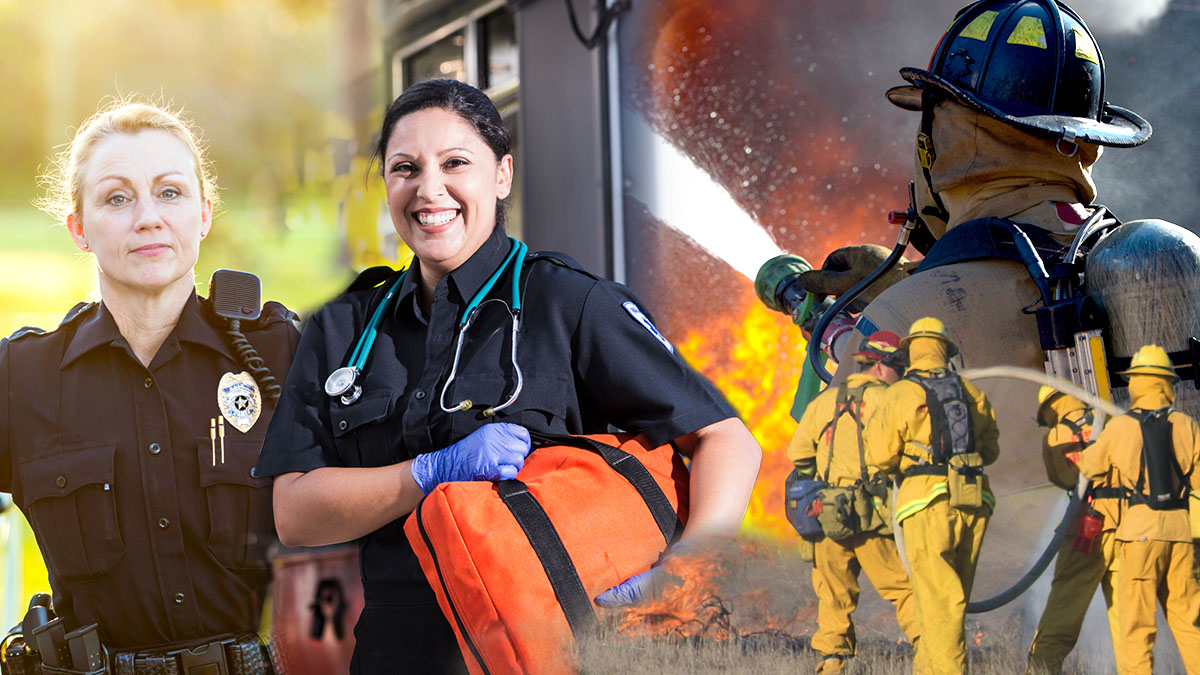Key points
- The Public Safety Program aims to reduce, prevent, or eliminate occupational exposures, injuries, illnesses, and fatalities through research and prevention.
- Fire service, law enforcement, corrections, emergency medical service (EMS), and wildland firefighting, are some of the most dangerous jobs worldwide.
Overview

Every day across the nation, emergencies occur that threaten people's life, well-being, property, peace, and security. During these events, society relies on public safety workers to respond, protect, and restore the safety, security, and routine.
The Public Safety Program sets national priorities, encourages new NIOSH projects to address program priorities, and monitors NIOSH-funded projects and grants. Through partnership development, the program identifies the most salient needs with a comprehensive goal to improve occupational safety and health (OSH). The program supports the most important research, understand effective intervention strategies, and implements those strategies to improve workplace practice. The Public Safety Program also tracks impacts achieved by NIOSH projects and partner efforts in support of sector goals.
Program priorities
The Public Safety Program has selected research priorities on the basis of burden, need and impact. The Program collaborated with other NIOSH research programs to write the research goals in the NIOSH Strategic Plan for FYs 2019-2026. Priority areas include (but are not limited to):
- Reduce occupational cancer, cardiovascular disease, adverse reproductive outcomes.
- Reduce occupational immune, infectious, dermal diseases and hazardous exposures to illicit drugs.
- Reduce occupational respiratory diseases including fixed airways diseases such as COPD.
- Reduce traumatic injuries including motor vehicle crashes (MVC), violence, and substance use/misuse.
- Prevent negative mental health outcomes such as PTSD, compassion fatigue, and depression.
What we've accomplished
In 2022-2023, the Program:
- Published an article assessing exposure to volatile organic compounds (VOCs) (e.g. benzene, styrene) during controlled-residential and training fires. Results indicate an increase in urinary VOC concentrations from pre- to post-fire measurements.
- Published a training video on row house firefighting tactics and challenges.
- Published an article examining firefighters' injuries in Ohio workers' compensation claims. Results indicate common injury events were overexertions and struck-by incidents.
- Published a safety advisory providing recommendations for using and training on the portable radio emergency alert button during a Mayday.
- Published an article evaluating the impact of COVID-19 on medical examiner and coroners' workload and resource needs. Results indicate increased workload and challenges, including PPE access and burnout, during the pandemic.
What's ahead
In the future, the Program aims to:
- Publish an analysis of first responder suicides from the National Violent Death Reporting System.
- Develop a document on prevention measures for motor vehicle crashes among law enforcement.
- Produce educational poster for incarcerated workers on safe use of disinfectants.
- Evaluate firefighters' exposure to VOCs and naphthalene when wearing different PPE configurations.
- Publish communication products on fighting strip mall fires.
- Enroll 200,000 firefighters in the NFR.
- Improve existing wildland firefighter PPE standards through collaborations.
Resources
More information on specific workplace safety and health topics and useful resources can be found on the following pages:
NORA Council
The Public Safety Program helps lead the NORA Public Safety Sector Council. The council brings together individuals and organizations to share information, form partnerships, and promote adoption and dissemination of solutions that work.
